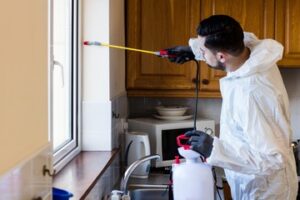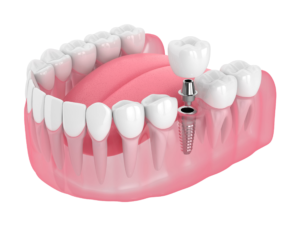The pool is a fun place to cool off on a hot day, but it can also pose serious hazards for unsupervised swimmers. Make sure a lifeguard is on duty and that a fence with self-closing gates surrounds your pool area.
Maintain proper chemical levels with chlorine (available in granules and tablets) and algaecide. Keep your water’s pH balanced by testing it regularly and using a product to adjust as needed. Contact The Woodlands Pool Company now!

Traditionally the most popular type of pool cleaner, suction cleaners connect to your pools existing filtration system and use the full power of the main circulation pump to “suck” debris from the floor of the pool, and pass it through to your filter for removal. They can also be paired with a booster pump to help them climb walls and get to hard-to-reach corners of your pool.
Because they sit close to your pool floor, they have a tendency to “churn” the bottom of your pool which can cause wear and tear on your liner. These cleaners are also more susceptible to clogging than other types of cleaners. They do a good job of vacuuming your entire pool floor, but don’t typically climb walls or go up the waterline very far. They are less expensive than pressure side or robotic cleaners but more costly to operate than other options.
Pressure side cleaners have a motor that drives the cleaner along your pool floor and sometimes up your walls, pushing water through the cleaner which creates a venturi effect that scrubs the surface of your pool. This type of cleaner puts more strain on your pool filter and requires more maintenance items like a tail scrubber, wear rings, bearings, tires, etc. to keep them running smoothly. If you have a lot of “stuff” in your pool it may be worth the extra investment to get this type of cleaner.
Robotic cleaners do not require a connection to your pool’s main filtration system, instead they run on their own independent power and move around the pool on their own. They can also be plugged into the bottom of your pool, freeing up the pool skimmer to “skim” leaves and debris. They are a more expensive option, but many customers find that they pay for themselves in time saved and money savings from not having to clean the pool manually.
BWT’s top-rated robotic cleaners feature multi-directional scrubbing brushes to fully scour your pool, dual or triple power-draining vacuum pumps for optimal cleaning, and intelligent sensor navigation that maps out the most efficient path to clean your whole pool. Plus, they can be controlled remotely and put on programmable cleaning cycles.
Manual Pool Cleaners
Manual vacuum cleaners require a hands-on approach to cleaning that relies on the user to maneuver and direct the vacuum head to every part of the pool. This level of control offers a customizable, customized cleaning experience that is particularly effective for hard-to-reach areas like corners, steps and stubborn debris spots. Because of this, manual vacuum cleaners tend to be less expensive than their robotic counterparts.
Unlike suction-side, pressure and robotic cleaners, which utilize their own motors and filtration systems to function, manual vacuum cleaners rely on the pool’s existing filtration system to work, meaning they can place more strain on the system and require more frequent filter cleaning and replacement. Additionally, if the filter becomes too clogged during use, it can impact the performance of the cleaner itself.
As a result, while they are cost-effective and simple to operate, manual vacuum cleaners may not be as effective in cleaning larger pools with more difficult-to-reach areas or thicker algae deposits. In general, these devices are best used as a supplement to regular pool maintenance and for occasional deep cleanings.
In addition to being a great choice for those on a budget, this model also boasts one of the most lightweight and portable designs among our top picks. The unit only weighs 5.5 pounds, making it easy to maneuver around the pool, even when working in tight spaces or reaching deeper ends of the pool.
The design is also durable, with a strong build that includes both stainless steel and nylon bristles to help tackle tough dirt and grime. In our tests, this model performed well during cleanings and was especially effective in tackling stuck-on dirt and algae stains.
Compared to other models we tested, this manual vacuum cleaner has the longest battery life of all our top picks and comes with a wall charger and one all-purpose filter bag as well as two disposable micro-filter bags. It is also designed to be quick and easy to use, with a setup process that typically takes no more than 15 minutes. While it doesn’t offer the same depth and thoroughness as other models, this vacuum is an ideal choice for those who prefer a no-frills cleaning system that can quickly and efficiently remove pesky leaves from a pool.
Chemical Pool Cleaners
Choosing the best pool chemicals is essential for keeping your water healthy and crystal clear. With a little bit of knowledge, understanding which products work for you and maintaining a regular routine, keeping your swimming pool clean is an easy task that anyone can do!
Chlorine tablets and liquid chlorine keep your water sanitised, keeping bacteria at bay. This is particularly important for indoor pools that are not exposed to natural bacteria-killing sunlight.
pH balancers keep your water at the correct level by reducing the acidity in your pool to make it easier for other chemicals to do their jobs. This is especially critical for chlorine levels as high acidity makes it more difficult for the chlorine to do its job effectively.
Total alkalinity is an important balancing chemical that increases the efficiency of chlorine by slowing down changes to the water’s pH level. It helps your chlorine last longer and keeps the water in a safer, more comfortable range for swimmers.
A clarifier works by combining with particles in the pool, making them large enough to be trapped by your filter. This helps prevent them from returning to the water and causing cloudy or dirty pool water. Some clarifiers contain ammonium chloride or crab shell extract.
If your pool contains a lot of debris, such as leaves, twigs and dirt, you may need a cleaner that moves the debris into your filter. These are typically robotic cleaners that can be controlled from your smartphone using the iAquaLink app.
Shocking your pool is a process that drastically raises chlorine levels for a short amount of time, killing any bacteria and burning any sanitiser byproducts. It’s a good idea to shock your pool at least once per week or fortnight.
As with any chemicals, it is essential to read and follow the label instructions carefully. It’s also recommended that you wear gloves, eye protection and a face mask when working with any pool chemicals. Be sure to store all chemicals properly and out of reach from children and pets. They should also be stored in a cool, dry place with proper ventilation.
Automatic Pool Cleaners
Whether you’re a pool cleaner expert or not, having a good automatic pool cleaner can reduce the amount of work it takes to keep your pool in shape. Choosing the right one depends on how much you want to spend, your current pool set-up, and how often you intend to use it.
A good automated cleaner can save you a lot of time and stress, freeing you up to spend more time doing the things you enjoy. However, before making a purchase, it’s important to look beyond star ratings and verified feedback to get an accurate picture of which models perform well and which don’t.
Most suction-side pool cleaners are powered by a motor and a pump that creates suction to collect debris. They also have a filtration system that traps the debris and prevents it from re-entering the water. Some models have disposable filters, while others use reusable cartridges that require regular cleaning.
These machines have sensors in their bump bars that detect objects such as walls and direct the machine to avoid them. They also have a delay timer that keeps the pumps off for a few hours at night, allowing suspended particles to settle on the bottom of the pool before starting the cleaning cycle.
In contrast to suction-side cleaners, robotic cleaners have their own internal pumps and filtration system, which means they’re independent of the pool’s main filter and pump system. This allows them to clean more of the surface area than suction-side cleaners. Some models also feature interactive modes, which enable you to customise your robot’s operation and maximise its effectiveness.
Robotic cleaners also have features like a programmable timer that allows you to set your cleaner to start and stop at specific times of the day, converting it into a hands-free pool cleaning assistant. Other models are equipped with smartphone capabilities, which allow you to control your robot from anywhere.
Traditional pressure-side and suction-side cleaners have their advantages, but they’re no match for modern robotic cleaners. Their high energy consumption and extra wear on the pool equipment drive up utility bills, and their tendency to get stuck or clogged can lead to expensive repairs.




